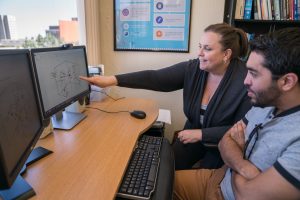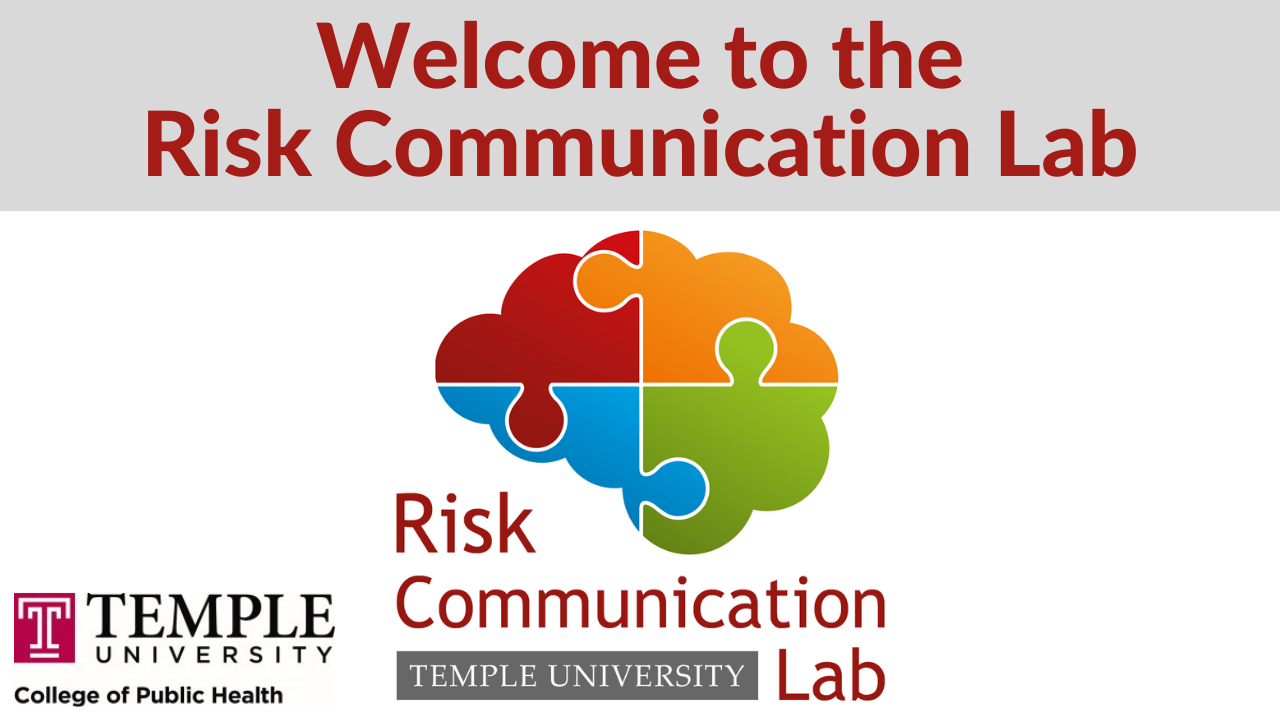Welcome to the Temple University Risk Communication Laboratory
Established in 2007 by founding director Dr. Tom Gordon and directed by Dr. Sarah Bass since 2012, the Risk Communication Laboratory is committed to developing meaningful health communication that helps people make informed decisions about their health. Believing that we have to ensure that messages meet the needs of all communities, our innovative methods use commercial marketing techniques and strategies to target messages to the needs of our “consumers”.
 Our team has made many advancements in the field of health communication, including the use of psycho marketing methods to understand perceptions and decision-making barriers and physiological measures to test the effects of campaigns and interventions. Utilizing perceptual mapping and vector modeling, a multi-dimensional scaling analysis method, we are using three dimensional models to understand how people think and feel about health-related decisions. This allows for highly targeted messages that we can then use to develop messages, materials or other types of decision aids or appeals. Our research features new health applications using a variety of technologies ( e.g. mobile “mHealth” and electronic “eHealth” applications) and assessing their impact on patient/public self-efficacy and behavior intention. We are also utilizing eye tracking, gaze pattern analysis, EKG and skin conductance measures to assess and understand how physiological response may affect intake and understanding of messages.
Our team has made many advancements in the field of health communication, including the use of psycho marketing methods to understand perceptions and decision-making barriers and physiological measures to test the effects of campaigns and interventions. Utilizing perceptual mapping and vector modeling, a multi-dimensional scaling analysis method, we are using three dimensional models to understand how people think and feel about health-related decisions. This allows for highly targeted messages that we can then use to develop messages, materials or other types of decision aids or appeals. Our research features new health applications using a variety of technologies ( e.g. mobile “mHealth” and electronic “eHealth” applications) and assessing their impact on patient/public self-efficacy and behavior intention. We are also utilizing eye tracking, gaze pattern analysis, EKG and skin conductance measures to assess and understand how physiological response may affect intake and understanding of messages.
This short video is an overview of our lab:

We believe that these methods can be applied to just about any health decision and we have used them in HIV prevention, cancer prevention, clinical trial participation, HCV treatment decision making, vaccination decisions, and emergency preparedness, among others. We are also dedicated to developing campaigns and interventions aimed at reaching those who are underserved and most at-risk of negative health effects, including those with low literacy, people with substance use disorder, sexual and gender minorities, and other vulnerable populations. We have been funded continuously by a variety of entities, including NIH (NCI, NIBIB, NIMH, NIDA), state and local governments (PA Department of Health, Philadelphia Department of Public Health), organizations (American Cancer Society, American Diabetes Association), and industry (Gilead, Merck).
We are excited about these advances in health communication research and invite you to learn more about how our methods are changing the way we think about health communication.